FOCUS,: Meet Steve Osborne, interim president of the College of Charleston
COMMENTARY, Brack: Use smarter tools to be tough on trade
IN THE SPOTLIGHT: Charleston International Airport
PALMETTO POEM: July 1963
WHAT WE LOVE: Tell us what you love about the Lowcountry
FEEDBACK: Pay attention people to the monster of a highway
MYSTERY PHOTO: Hmmm, looks like a church, but where?
S.C. ENCYCLOPEDIA: Briggs v. Elliott
CALENDAR, July 9+: Another great library book sale is around the corner
FOCUSFOCUS: Meet Steve Osborne, interim president of the College of Charleston
By Mike Robertson, College of Charleston | Stephen C. Osborne became the interim president of the College of Charleston on July 2 following the retirement of President Glenn F. McConnell ’69.
Osborne, however, is not new to the college, having served as a senior advisor to McConnell for the past year and before that as executive vice president and chief financial officer for the college from 2006 to 2017.
As he takes the helm of his alma mater, Osborne shared some details about himself and his plans for the college in the coming months as the Board of Trustees works toward identifying CofC’s 23rd president.
How do you feel about assuming the role of interim president of the College of Charleston?
I know that being president carries a tremendous amount of responsibility with it. I’m excited to be put in this leadership role and honored to be asked to fulfill this position by the colleges’ Board of Trustees.
How are you approaching your new role? What are you most looking forward to?
I’ve been at the College of Charleston for nearly 12 years in the administration, and I feel like I know the operation of the college fairly well. As president, I’m going to do a lot of listening. We’ve had listening sessions for what our campus community is looking for in the next president and how she or he can help improve the college, and that’s given me some ideas as to what I can do during my time as interim president. I’m looking forward to getting to know as many people as possible and working together with our remarkable students, faculty and staff to continue moving the College forward.
What are your plans for the college during your tenure?
When I first thought about what I wanted to tackle as interim president, I made a list of five areas. That list soon became 10 areas. I’ve been able to regroup the list of 10 into four buckets:
- Campus Experience (student experience, especially focusing on internships and study-abroad opportunities; faculty/staff morale; athletics/school spirit; and diversity and inclusion initiatives);
- Academic Experience (new academic programing; undergraduate research; and the Graduate School);
- Philanthropy (donor stewardship and alumni engagement); and
- 250th Anniversary Celebration (hire a project director and launch the steering committee)
While a number of these initiatives are already underway and ongoing, these are areas I want to have an impact on as well as where I feel I can truly help enrich and elevate our university.
As an alumnus and the parent of an alumnus, what is so special about the College that it keeps drawing you back?
The college is really a special part of me. I received a great education here; in addition, my college years were also a really formative time of my life. I still have great relationships with many people who I went to school with at the college.
When my son, Stephen C. Osborne II, was considering colleges and universities to attend, I encouraged him to look at several different schools. He knew about my campus experience and decided to add the College to his list even though we were living in Columbia at the time. After he did his campus tour, it was over. He fell in love with the College and the rest is history. Stephen graduated in 2006 with a bachelor’s degree in business administration.
My older brother and niece also graduated from the College, and I have a nephew who is currently enrolled here.
What did you enjoy most about being a student at the College in the early ’70s?
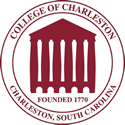 Life at the college in the early ’70s was an interesting time. The college was still quite small with an enrollment of around 1,000 students. Rapid growth was taking place during that time. I lived in Craig Union (now Craig Hall) my first year, off-campus my second year, and in Silcox Gym during my third and final year. Silcox housed the basketball team at the time, and I served as team manager. It was a very active political climate at the time, the aftereffects of the late ’60s were still very much alive, and the Vietnam War was at its height.
Life at the college in the early ’70s was an interesting time. The college was still quite small with an enrollment of around 1,000 students. Rapid growth was taking place during that time. I lived in Craig Union (now Craig Hall) my first year, off-campus my second year, and in Silcox Gym during my third and final year. Silcox housed the basketball team at the time, and I served as team manager. It was a very active political climate at the time, the aftereffects of the late ’60s were still very much alive, and the Vietnam War was at its height.
What I enjoyed most was an environment where I knew most of my classmates and professors, which gave me an exceptional education and a lot of great memories.
Rumor has it you had a nickname in college. What was it?
Almost everyone that I was friends with had a nickname. Mine in College was Oz. Many people still call me Oz today. I encourage our campus community to call me President Oz whenever they see me on campus or at events.
When you’re not on campus, how do you spend your time?
I spend time with my family. I’m an avid reader, and I like to play golf and watch a lot of sports.
Are there any TV shows you absolutely must watch, binge-style or otherwise?
Homeland, Green Bay Packers football games and Detroit Tigers baseball games.
Do you have a favorite book?
All the King’s Men by Robert Penn Warren. It’s my favorite book because it’s a great novel that provides a lot of insight into politics and what motivates people in positions of power.
Mike Robertson is senior director of media relations at the college.
- Have a comment? Send to: editor@charlestoncurrents.com
BRACK: Use smarter tools to be tough on trade
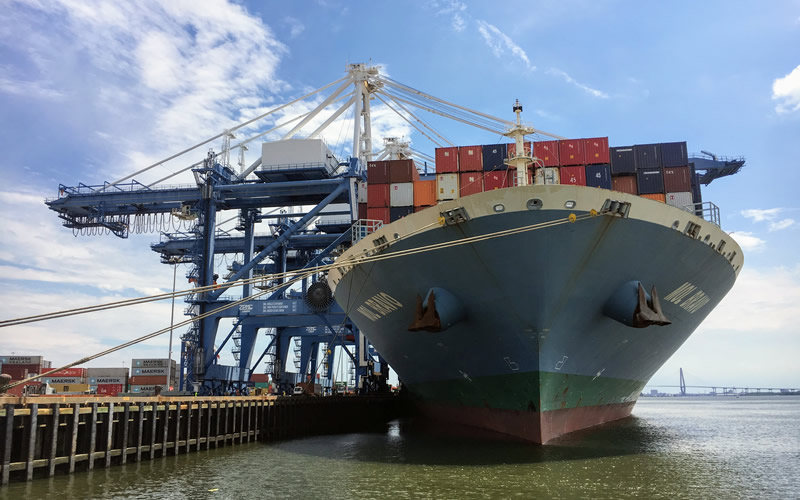
A ship in Charleston harbor. Photos via Charleston Branch Pilots Association in Charleston Currents.
By Andy Brack, editor and publisher | President Donald Trump is the bully in the China shop of global trade. If a new trade war sparked by tariffs on goods from China, Canada, Mexico and our European allies continues, South Carolinians will lose jobs – lots of jobs.
 “The South Carolina economy is placed at high risk in the current tough talk about trade,” said economist C. Bruce Yandle, dean emeritus of the Clemson University College of Business and Behavioral Science. “Far more international than the national economy, South Carolina has export-supported jobs that reach across the entire state. Making matters even more difficult, China is the top destination for S.C. exports, followed by Germany, Canada and Mexico.”
“The South Carolina economy is placed at high risk in the current tough talk about trade,” said economist C. Bruce Yandle, dean emeritus of the Clemson University College of Business and Behavioral Science. “Far more international than the national economy, South Carolina has export-supported jobs that reach across the entire state. Making matters even more difficult, China is the top destination for S.C. exports, followed by Germany, Canada and Mexico.”
A new study by the U.S. Chamber of Commerce suggests South Carolina, which has worked hard for years to attract foreign investment to beef up its economy, stands to be the eighth-most affected state from retaliatory tariffs by China, Canada, Mexico and our European allies. The study says $3 billion in exports, many shipped through the port of Charleston, are threatened by a trade war.
That could raise the costs of doing business, which would impact workers at big plants, such as those building Boeing jets in North Charleston or BMW vehicles in Greer – and future vehicles from a new Lowcountry facility being built by Volvo, a Swedish brand actually owned by the Chinese company Geely.
“If you have trade barriers and restrictions, we cannot create as many jobs as we are planning to,” Volvo’s CEO said last month.
A tariff escalation likely would have huge ripple effects, too, costing jobs down the supply chain as smaller companies don’t get as many orders from the big companies. If laid-off workers are lucky enough to find lower-paying jobs, they would not have as much spending money to patronize local shops and restaurants, causing them to feel the pinch. Churches would see less money in Sunday collection plates. The state’s economy would slow down and unemployment would rise.
“State officials have bragged correctly that the big manufacturers they have enticed to locate in South Carolina also brought more business opportunities for our existing and new small businesses,” said Frank Knapp, president and CEO of the S.C. Small Business Chamber of Commerce. “However, the Trump Administration’s self-inflicted tariff war will be a disaster for our state’s small businesses that were told to export and that are dependent on our exporting-manufacturers for survival.
“While big and multinational companies will survive largely because of the 40 percent corporate tax rate cut approved by Congress last December, 90 percent of our small businesses are not corporations and received very little benefit from the GOP tax reform. These small businesses are going to suffer greatly due to the tariff war and possibly not survive at all.”
 Trump’s billions of dollars in newly-implemented tariffs, now countered by billions of retaliatory tariffs by China and other countries, is an economic doomsday scenario for the Palmetto State. It’s not going to force bad trade actors – China in particular – to make lots of change in how they do business. Why? Because tariffs are too broad, risky and old-school for that kind of result.
Trump’s billions of dollars in newly-implemented tariffs, now countered by billions of retaliatory tariffs by China and other countries, is an economic doomsday scenario for the Palmetto State. It’s not going to force bad trade actors – China in particular – to make lots of change in how they do business. Why? Because tariffs are too broad, risky and old-school for that kind of result.
Instead, the United States needs to use more surgical trade tools to force change. We should use other trade tactics and strategies, such as curbing U.S. access to counterfeit goods, cutting theft of American ingenuity, updating our own antitrust and foreign investment laws, and stopping scientific and technical cooperation (i.e., opening our research and development efforts) to bad trade actors.
“What is being talked about [tariffs] is an approach that would broadly affect the state and ultimately would affect production in the state,” said Ted Pitts, president and CEO of the S.C. Chamber of Commerce. “We need for our federal delegation to take time and understand impacts and express their concerns with the administration.”
Tariff advocates may point out that China, in particular, has been playing the United States for Uncle Sucker for years. It has undercut prices to get market share. It has different working standards to lure production in China and it outright steals American intellectual property.
But throwing an international tantrum with the jobs of South Carolina workers as sacrificial lambs is the ultimate in economic irresponsibility. There are smarter ways to be tough on trade.
- Have a comment? Send to: editor@charlestoncurrents.com
SPOTLIGHT: Charleston International Airport
 Today we shine a spotlight on Charleston International Airport, which provides a first impression of the Charleston metropolitan area to over 4 million passengers a year who visit for business and leisure activities. One of three public airports operated by the Charleston County Aviation Authority, Charleston International Airport is committed to providing an unparalleled passenger experience while continuing efforts to support economic development for the Lowcountry and State of South Carolina.
Today we shine a spotlight on Charleston International Airport, which provides a first impression of the Charleston metropolitan area to over 4 million passengers a year who visit for business and leisure activities. One of three public airports operated by the Charleston County Aviation Authority, Charleston International Airport is committed to providing an unparalleled passenger experience while continuing efforts to support economic development for the Lowcountry and State of South Carolina.
Eight airlines currently serve Charleston International Airport, which have jobs that create more than $200 million in income for workers in the region. Visiting passengers also spend about $450 million a year directly in area businesses, which sustains an estimated 6,000 jobs locally. The total economic impact of the Charleston International Airport is over $1 billion dollars to the Lowcountry and State of South Carolina.
- To learn more about Charleston International Airport, please visit com.
- To meet all of our underwriters, click here.
PALMETTO POEM, Miles: July 1963
By Rene Bufo Miles, special to Charleston Currents
![]() It looked like ribbon my husband said
It looked like ribbon my husband said
that long run of river
flattened out in the summer heat,
and at first, that’s what it felt like,
the shining water reflecting the sunlight
as they rafted in the early morning.
There was the silence, the warmth of it,
that first day on the Alabama River
before the country lost its balance
and forgot rooted honor, he said,
the young rising up, refusing to fight,
but not these boys on the river.
Four boys, barely seventeen,
floated 200 miles down the Alabama,
a high school graduation jaunt
hatched in the green light of spring leaves.
Raft built from borrowed lumber,
food was stored in seed sacks, wooden crates.
The fields beyond the river new plowed.
My husband said he slept off the bourbon
in the stars’ light,
never imagined so much water
in all the flip chart maps
in his twelve years of schooling,
never imagined the river so wide,
the water so black.
These few things he told me
though he never spoke of the darker water
of rice paddies four years later.
He never mentioned
the mud, knee deep in the fields,
the soldiers blood.
The long run of the river is what I see
when I think my husband’s thoughts,
the four boys with flip chart dreams
not the steaming fields,
the battered men,
the broken country,
but the river wide as sky.
About the poet: Rene Bufo Miles’s career as an educator spans 41 years, during which she taught at middle, high and college levels. She recently retired from 20 years of teaching at Charleston County School of the Arts where she designed and implemented the Creative Writing Program and literally made it her child. On three occasions, Scholastic Publishing named her the Gold Apple Teacher for submitting the most outstanding group of entries. She and her student, Jessica Atkinson, were featured in a New York Times article by Michael Winerip, she was awarded a Rockefeller Foundation Fellowship to attend the Bread Loaf School of English, and her poetry has appeared in various journals. When she is not running around like a nut she is quilting, gardening, cooking, taking Zumba classes and still writing poetry.
WHAT WE LOVETell us what you love
![]() Send a short comment – 100 words to 150 words – that describes something you really enjoy about the Lowcountry. It can be big or small. It can be a place, a thing or something you see. It might the bakery where you get a morning croissant or a business or government entity doing a good job. We’ll highlight your entry in a coming issue of Charleston Currents. We look forward to hearing from you.
Send a short comment – 100 words to 150 words – that describes something you really enjoy about the Lowcountry. It can be big or small. It can be a place, a thing or something you see. It might the bakery where you get a morning croissant or a business or government entity doing a good job. We’ll highlight your entry in a coming issue of Charleston Currents. We look forward to hearing from you.
FEEDBACK: Pay attention people to the monster of a highway
To the editor:
![]() Thank you for Fred Palm’s superb analysis of the [Interstate] 526 problem. There are other points that should be made:
Thank you for Fred Palm’s superb analysis of the [Interstate] 526 problem. There are other points that should be made:
- A big chunk of the stratospheric costs of 526 are caused by a design that calls for about four miles of elevated construction over a marsh and river on Johns Island. That’s because no one thought to hold up construction of several recent housing developments along the river, and no one dares to seize some of that land by eminent domain. The marsh is organic, and provides vital cleansing of our waters and other benefits. How much marsh will survive the perpetual shade created by the elevated roadway?
- With the obscene costs of that four mile “bridge” to absorb, James Island will get no elevation at all. A ground-level highway will destroy a good chunk of James Island County Park, split James Island in half, and cause obscene traffic jams at the intersection of Folly Road, 526, and the Connector, where a ramp designed to connect to a fly-over of Folly Road was built 30 years ago. Most people on James Island naively assume that the fly-over will be completed. Not so. The elevated sections of the 526 extension are all on Johns Island.
Pay attention, people. Because of its design, this monster will cause tremendous damage at astronomical cost. And it’s estimated that commuting time will be reduced by TWO MINUTES. If you really want the 526 extension, start over with a design that makes geographic and fiscal sense.
— Susan Breslin, Folly Beach, S.C.
Send us your thoughts and reactions. We love hearing from readers. Comments are limited to 250 words or less. Please include your name and contact information. Send your letters to: editor@charlestoncurrents.com. | Read our feedback policy.
MYSTERYMYSTERY PHOTO: Hmmm, looks like a church, but where?
This is a distinctive building, but what and where in South Carolina is it?
Send your best guess – plus your name and hometown – to editor@charlestoncurrents.com. In the subject line, write: “Mystery Photo guess.” (If you don’t include your contact information, we can’t give you credit!)
Last issue’s mystery
 The July 2 mystery photo was tough. It showed a construction project. There were great guesses of an electricity substation on James Island and the new Volvo plant. But the photo showed the state of construction on a new 40,000-square-foot library being built in the Carolina Park area of Mount Pleasant. The local library system is in the middle of a $108 million construction program that will yield five new libraries within a couple of years. More.
The July 2 mystery photo was tough. It showed a construction project. There were great guesses of an electricity substation on James Island and the new Volvo plant. But the photo showed the state of construction on a new 40,000-square-foot library being built in the Carolina Park area of Mount Pleasant. The local library system is in the middle of a $108 million construction program that will yield five new libraries within a couple of years. More.
Congratulations to David Burt of James Island and George Graf of Palmyra, Va. The answer should have been easy to Burt – he’s one of the architects on the project. Graf figured out the mystery by using his noggin. He also provided some context:
“According to carolinapark.com, the new library will join Carolina Park Elementary School and Oceanside Collegiate Academy as the newest additions to Carolina Park’s “knowledge hub” – a collection of five outstanding schools complemented by the new library, and all located within the Carolina Park community.
“Designs for the 40,000-square-foot facility show a modern library with an inviting outside seating area. Construction for the Carolina Park library is estimated at about $23 million, according to the Charleston County Public Library.
“A 2014 referendum approved five new county libraries and renovations at 13 branches. This is the first groundbreaking for any of the approved new branches. New libraries are also planned in North Charleston, James Island, West Ashley and Hollywood.”
Send us a mystery: If you have a photo that you believe will stump readers, send it along (but make sure to tell us what it is because it may stump us too!) Send it along to editor@charlestoncurrents.com.
S.C. ENCYCLOPEDIAHISTORY: Briggs v. Elliott
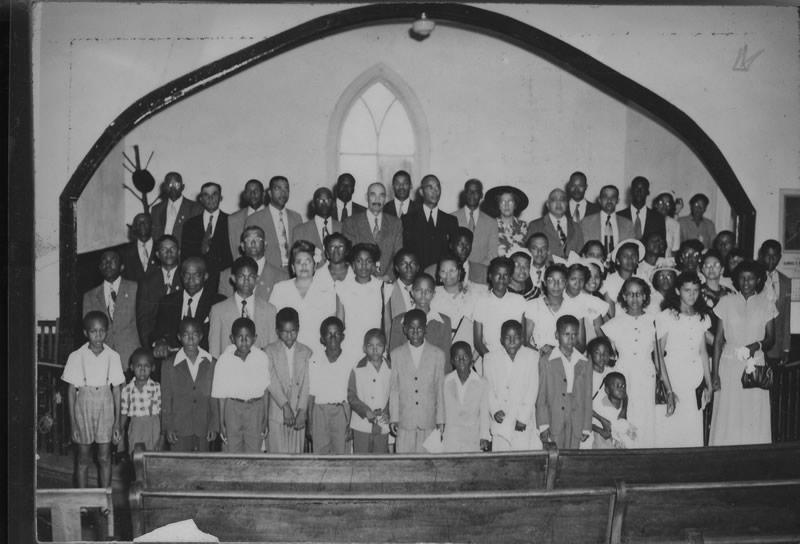
Plaintiffs in Briggs v. Elliott, June 1951. From the Joseph A. De Laine Papers in the South Caroliniana Library at the University of South Carolina and used with permission.
S.C. Encyclopedia | Briggs v. Elliott was one of five cases, collectively entitled Brown et al. v. Board of Education of Topeka, Shawnee County, KS, et al., argued before the United States Supreme Court on December 9–11, 1952, and December 7–9, 1953, by attorneys from the National Association for the Advancement of Colored People (NAACP). The historic decision of Brown v. Board of Education rendered the doctrine of “separate but equal” public education unconstitutional and led to the movement to desegregate public schools throughout the United States. Originally a lawsuit filed by twenty African American parents in Clarendon County for equal educational opportunities for their children, Briggs v. Elliott was the first case in the 20th century to challenge the constitutionality of racially segregated schools. The case carries the names of the lead plaintiff, Harry Briggs, who had five children in the school district, and Roderick W. Elliott, chairman of School District 22.
Ironically, the plaintiffs in the case that eventually became the Briggs case just wanted the Clarendon County school board to provide a school bus for their children. Some African American children had to ford or row across a stream (when it was flooded) and then walk an additional nine miles in order to attend Scott’s Branch School in Summerton. Others had to walk at least five miles one way to attend the school. After a young boy drowned in the newly created Lake Marion reservoir, which separated several African American communities from the school, in 1948 Reverend Joseph Armstrong De Laine, a minister of the African Methodist Episcopal Church, urged a local African American farmer, Levi Pearson, to sue for a school bus. The case, Levi Pearson v. Clarendon County and School District No. 26, was filed by NAACP attorney Harold Boulware of Columbia. The case was withdrawn, however, when it was discovered that Pearson’s residence straddled the county line and that he paid taxes in a different district.
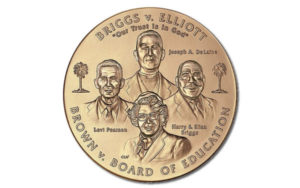 Subsequently, De Laine and Boulware met with attorneys from the NAACP’s national office to request support for another case challenging the school board’s refusal to provide African American children with transportation. At first the NAACP’s chief legal counsel, Thurgood Marshall, turned down their request. But he changed his mind and decided to support another challenge if De Laine would obtain 20 petitioners from the Clarendon County community to support a case to equalize all aspects of education for African American children—including facilities, teachers’ salaries, books, and supplies—as well as transportation.
Subsequently, De Laine and Boulware met with attorneys from the NAACP’s national office to request support for another case challenging the school board’s refusal to provide African American children with transportation. At first the NAACP’s chief legal counsel, Thurgood Marshall, turned down their request. But he changed his mind and decided to support another challenge if De Laine would obtain 20 petitioners from the Clarendon County community to support a case to equalize all aspects of education for African American children—including facilities, teachers’ salaries, books, and supplies—as well as transportation.
Marshall agreed to represent the plaintiffs because their case represented an opportunity for the NAACP to continue its campaign against unequal, segregated education for African Americans in the southern states. The campaign, which began in 1935 under the leadership of the NAACP’s first chief legal counsel, Charles Hamilton Houston, had developed as a three-pronged strategy to improve African American education in the South. First, Houston wanted to ensure that African American teachers in the southern states received salaries equal to those of white teachers. Second, he wanted to ensure that the southern states provided transportation for African American students to and from their schools. Third, he wanted to ensure that the southern states provided graduate and professional education and training for African American students. Houston’s strategy was based on using the “separate but equal” doctrine established in the 1896 Plessy v. Ferguson decision to force the southern states to provide African American students an education that was truly equal to that of white students. It did not challenge the doctrine directly or demand integration. From 1938 to 1948 Houston’s successor and former student Thurgood Marshall continued his strategy, but by the latter year he was ready for a full, frontal assault on the constitutionality of segregated schools.
In November 1950, Marshall presented the case of the 20 plaintiffs from Clarendon County to the federal district court in Charleston. During the pretrial hearing he was encouraged by federal judge J. Waties Waring of Charleston not to argue for a “separate but equal” education, or one that would only equalize African American schools in a segregated system. Judge Waring encouraged him instead to present a case arguing for schools for African American children that would truly be equal by asking for an end to segregation in the state’s public schools. Taking Waring’s advice, in May 1951 Marshall returned to the federal court and presented his case for ending segregation in the state’s public schools. He introduced evidence showing how the African American schools in Clarendon County were grossly unequal to those for whites in facilities, teacher-to-student ratios, class sizes, and expenditures per student. The attorneys representing the state of South Carolina sought to defuse this argument by announcing that Gov. James F. Byrnes was going to introduce a new sales tax to raise money to improve the state’s African American schools. But Marshall also presented testimony from the sociologist Kenneth Clark documenting the harmful effects of segregation on the lives and psyches of African American children in South Carolina. Arguing the case before a three-judge panel, which included Waring and two segregationists, Judges John J. Parker and George Bell Timmerman, Marshall lost the case. Only Judge Waring supported his argument and offered a dissenting opinion against segregated schools in South Carolina.
The Briggs case was appealed to the United States Supreme Court, where it became part of the famous Brown case. NAACP attorneys Robert Carter and Thurgood Marshall argued the case on behalf of its South Carolina plaintiffs, while former U.S. solicitor general John W. Davis represented the state in its defense of its segregated school system. On May 17, 1954, the Supreme Court ruled in favor of the plaintiffs and declared, unanimously, segregation in public schools unconstitutional.
Despite the case’s favorable outcome, its South Carolina plaintiffs suffered tremendous hardships for their decision to pursue justice for their children. Reverend De Laine was shot at, his house was burned to the ground, and he was eventually forced to flee the state. Harry Briggs, the lead plaintiff, lost his job as a gas station attendant. Levi Pearson, the plaintiff in the first attempt to obtain only a school bus, had his loans called in, and he had to watch his crops for 1948 rot in the fields because he could not rent the machinery to harvest them. Other plaintiffs and supporters of the case were harassed; fired from their jobs as teachers, matrons, and housekeepers; and kicked off the land of white landowners for whom they were sharecropping. Due to the designation of this landmark case as the “Brown case” or the “Brown decision” in American legal history, the sacrifices of these South Carolinians who filed the first major case to challenge the constitutionally of segregated schools have frequently been overlooked in the nation’s history books.
— Excerpted from an entry by W. Marvin Dulaney. To read more about this or 2,000 other entries about South Carolina, check out The South Carolina Encyclopedia, published in 2006 by USC Press. (Information used by permission.)
ON THE CALENDARCALENDAR, July 9+: Another great library book sale is around the corner
![]() Library book sale: 9 a.m. to 5:30 p.m., July 27, and 9 a.m. to 4 p.m., July 28, Johns Island Regional Library, 3531 Maybank Highway, Johns Island. The Charleston Friends of the Library will host its annual Johns Island Book Sale where you can pick up $1 paperbacks and $3 hardbacks. Proceeds benefit the public library system. This event is free.
Library book sale: 9 a.m. to 5:30 p.m., July 27, and 9 a.m. to 4 p.m., July 28, Johns Island Regional Library, 3531 Maybank Highway, Johns Island. The Charleston Friends of the Library will host its annual Johns Island Book Sale where you can pick up $1 paperbacks and $3 hardbacks. Proceeds benefit the public library system. This event is free.
Disconnected: Works by Christine Bush Roman: Now through Aug. 5, City Gallery, 14 Prioleau St., Charleston. The City of Charleston Office of Cultural Affairs will present this show in which the artist combines transfer techniques with painting, drawing and collage to give glimpses into the intricate and contradictory nature of modern life. The works explore postpartum depression, mental illness, and a life out of balance, while examining the web of issues that lead to detachments from one another and the natural world. More: www.charleston-sc.gov/citygallery.
Music Under the Oaks: 11 a.m. Aug. 4, Charles Pinckney National Historic Site, 1254 Long Point Road, Mount Pleasant. On June 2, NIA Productions will feature African drumming and dance; On July 4, the show will feature singer Ann Caldwell while the Plantation Singers will perform Aug. 4. Bring sunscreen and insect repellant.
Historic Charleston house tours. 10:30 a.m. to 12:30 p.m., every Tuesday through Aug. 7 at the Nathaniel Russel House, 51 Meeting St., Charleston, and every Thursday through Aug. 9 at the Aiken-Rhett House, 48 Elizabeth St. To learn more about the event and fees, click here.
TEDxCharleston: The annual day of ideas in Charleston is accepting applications through August 27 for participants to speak or perform on issues related to the theme for April 10, 2019: Currents. The theme will explore “What trends are rising to the surface? How are science, art, culture and conversation making waves and evolving to meet the needs of future communities? What changes are happening that parallel and challenge our history?” Learn more | sign up.
Early morning bird walks at Caw Caw: 8:30 a.m. every Wednesday and Saturday, Caw Caw Interpretive Center, Ravenel. You can learn about habitats and birds, butterflies and other organisms in this two-hour session. Registration not required, but participants are to be 15 and up. $10 per person or free to Gold Pass holders. More: http://www.CharlestonCountyParks.com.
AREA FARMERS MARKETS
SATURDAYS: The Charleston Farmers Market, is back in action from 8 a.m. to 2 p.m. every Saturday through Nov. 24 at Marion Square. A holiday market will be open Dec. 1, 2, 8. 9, 15 and 16.
SATURDAYS: Johns Island Farmers Market operates each Saturday from 9:30 a.m. to 1:30 p.m. year-round with more than 50 local farmers and vendors, food trucks, music and more. The market is located on the campus of Charleston Collegiate School, 2024 Academy Road, Johns Island.
SATURDAYS: The Town Market on James Island are again open. Open 9 a.m. to 1 p.m. every Saturday at the James Island Youth Soccer Club, 871 Fort Johnson Road, James Island.
TUESDAYS: The Town of Mount Pleasant’s Farmers Market is every Tuesday from 3:30 p.m. to 7 p.m. in the market pavilion at Moultrie Middle School, 645 Coleman Blvd, in Mount Pleasant.
WEDNESDAYS. The West Ashley Farmers Market, 55 Sycamore Ave., is open every Wednesday from 3 p.m. to 7 p.m. in Ackerman Park. More.
- If you have an event to list on our calendar, please send it to charlestoncurrents@gmail.com for consideration. The calendar is updated weekly on Mondays.
OUR UNDERWRITERS
Charleston Currents is an underwriter-supported weekly online journal of good news about the Charleston area and Lowcountry of South Carolina.
- Meet our underwriters
- To learn more about how your organization or business can benefit, click here to contact us. Or give us a holler on the phone at: 843.670.3996.
OUR TEAM
Charleston Currents offers insightful community comment and good news on events each week. It cuts through the information clutter to offer the best of what’s happening locally.
- Mailing address: O. Box. 22261 | Charleston, SC 29413
- Phone: 670.3996
Charleston Currents is provided to you weekly by:
- Editor and publisher: Andy Brack, 843.670.3996
- Contributing photographer: Michael Kaynard
- Contributing editor, careers: Ben Fanning
- Contributing editor, common good, Fred Palm
- Contributing editor, money: Kyra Morris
- Contributing editor, Palmetto Poem: Marjory Wentworth
SUBSCRIBE FOR FREE
Subscriptions to Charleston Currents are free.
- Click here to subscribe.
- We don’t want to lose you as a reader of Charleston Currents, go to the bottom of any of your weekly newsletters and click the “unsubscribe” function. If that doesn’t work, please send us an email with the word “unsubscribe” in the subject line.
© 2008-2018, Statehouse Report, LLC. All rights reserved. Charleston Currents is published every Monday by Statehouse Report LLC, PO Box 22261, Charleston, SC 29413.


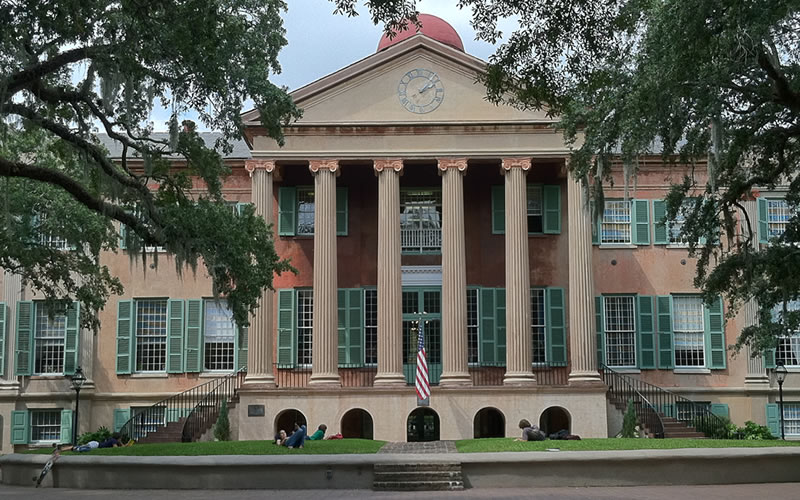
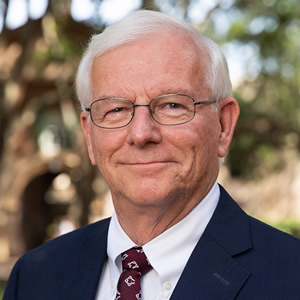



 We Can Do Better, South Carolina!
We Can Do Better, South Carolina!
























